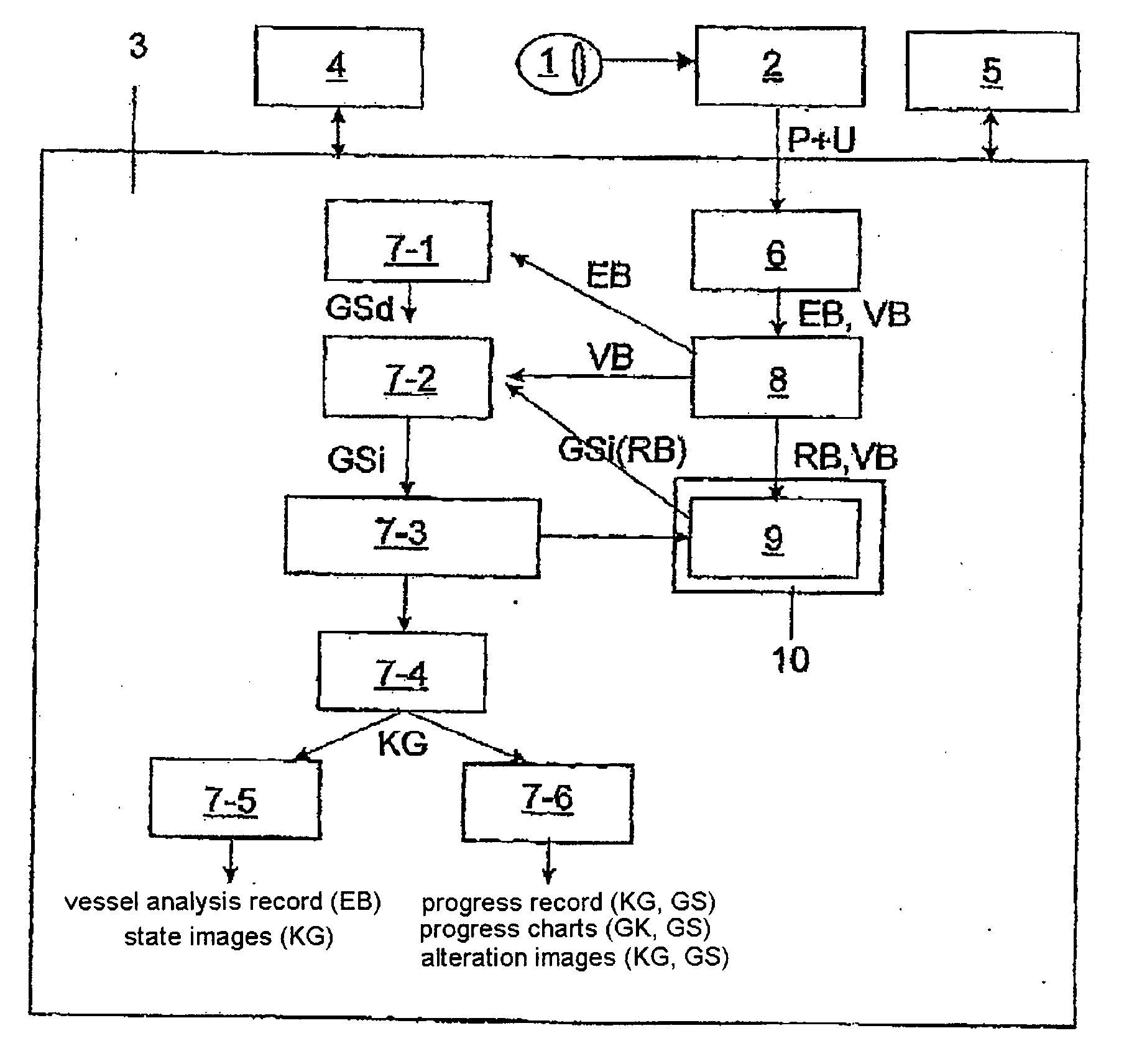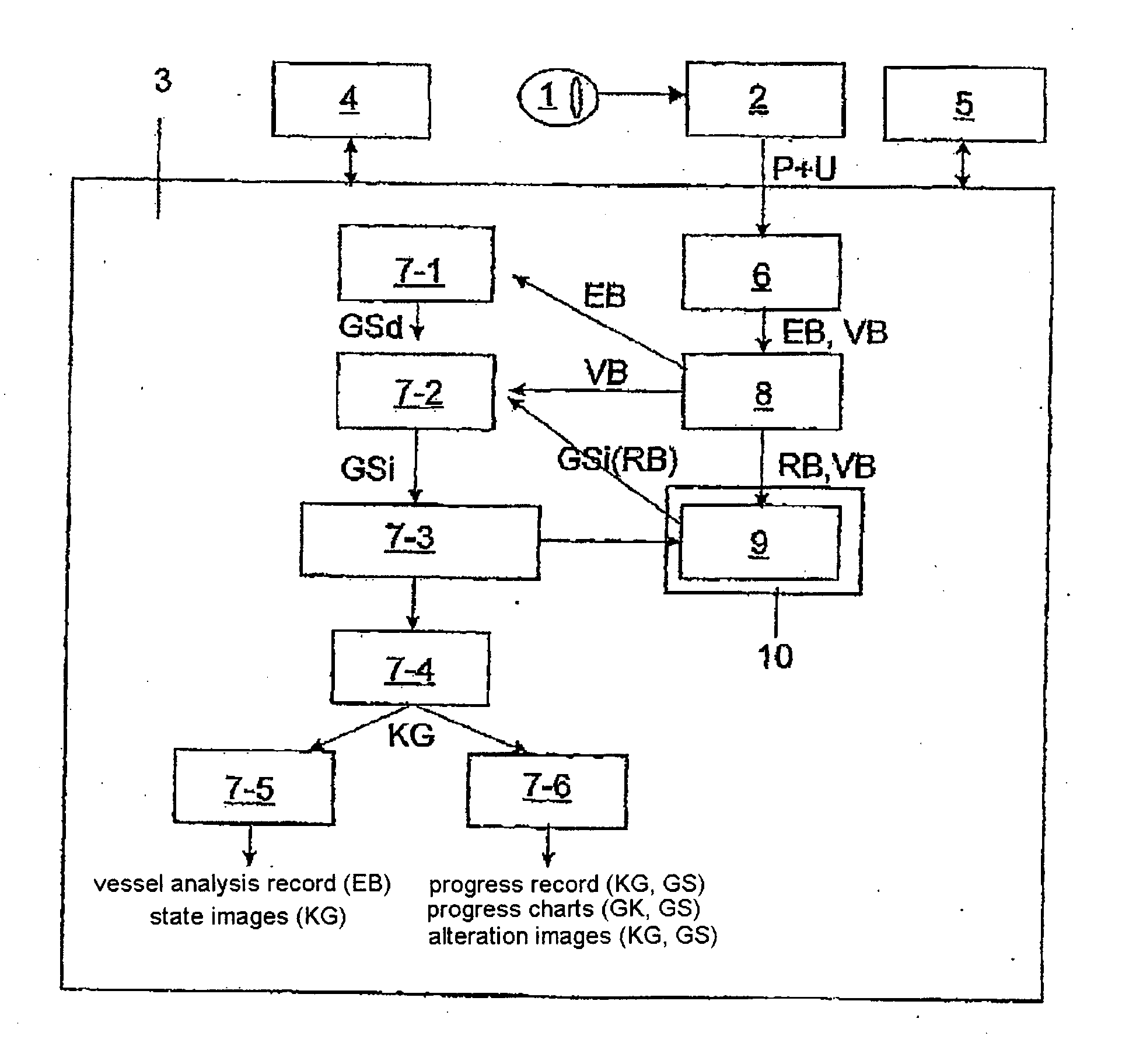Method And Device For Analyzing The Retinal Vessels By Means Of Degital Images
a retinal vessel and degital image technology, applied in image analysis, image enhancement, instruments, etc., can solve the problems of high incidence of subjective systematic and random errors, time-consuming, and inability to identify individual diagnoses, so as to improve the ability to discriminate, reduce manual effort, and save time
- Summary
- Abstract
- Description
- Claims
- Application Information
AI Technical Summary
Benefits of technology
Problems solved by technology
Method used
Image
Examples
Embodiment Construction
[0012]A series of adjoining vessel segments is selected along the vessel portions, and a vessel segment diameter, assignment to a vessel portion, the type of vessel distinguished by artery or vein and the associated image coordinates are determined for every vessel segment and are stored and archived by vessel segment together in a data set with reference to the evaluated image so that they can be accessed for subsequent comparison measurements. By means of comparison measurements in comparison images of the same eye recorded at offset times, the vessel diameters are automatically determined in the comparison image for vessel segments identical to a selected reference image, wherein the correlation of the vessel segment to the vessel type and vessel portion is adopted intact from the reference image. The data sets relating to the vessel segment in the comparison images are supplemented by reference to the reference image and a displacement vector of the vessel segment between the re...
PUM
 Login to View More
Login to View More Abstract
Description
Claims
Application Information
 Login to View More
Login to View More - R&D
- Intellectual Property
- Life Sciences
- Materials
- Tech Scout
- Unparalleled Data Quality
- Higher Quality Content
- 60% Fewer Hallucinations
Browse by: Latest US Patents, China's latest patents, Technical Efficacy Thesaurus, Application Domain, Technology Topic, Popular Technical Reports.
© 2025 PatSnap. All rights reserved.Legal|Privacy policy|Modern Slavery Act Transparency Statement|Sitemap|About US| Contact US: help@patsnap.com


